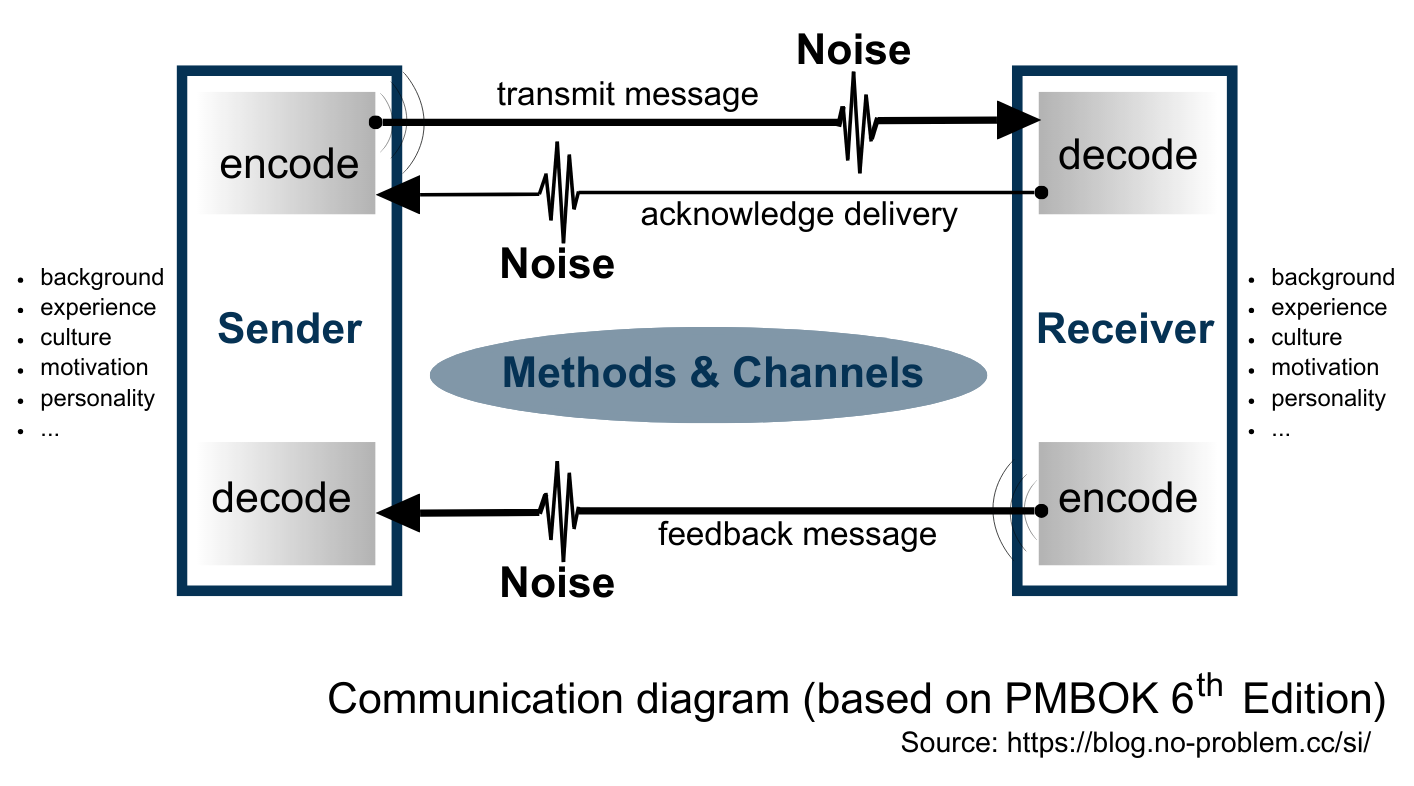Pitfalls in communication
Communication is one of the ultimate qualities we apply in different situations. In a business environment, effective communication is a crucial skill to succeed. It can be done in various forms and types, through different channels, and by using many tools, which define the route to deliver a message from one person to another. Methods applied for information exchange vary significantly and may include formal and informal meetings, presentations, negotiations, written documents, knowledge databases, social media, press releases, websites, and so on.
Communication is a very complex process and it is not an obvious task to describe it all-embracing in one universal model. Different models of communication focus on various aspects of an encounter and help to decompose the process into manageable parts. In common use are the following models:
- The transmission model describes communication as a linear, one-way process in which a sender intentionally transmits a message to a receiver. It is concerned with ensuring that the message is delivered, rather than understood.
- The interaction model incorporates a reaction (feedback), which makes communication a two-way process. It recognizes the need to ensure that the message has been understood and focuses on producing interactions within various contexts.
- The transaction model includes a more complex understanding of context and participants who are simultaneously senders and receivers. It describes communication as a process in which communicators generate realities and relationships within social, relational, and cultural contexts.
As a rule, the communication purpose defines appropriate models and combinations of forms (formal, informal, written, verbal) to apply. If there is a need to deepen partnership with a new customer the transaction model of communication can be employed. At the same time, a presentation by a company of its plans or for a new product favours the transmission model of communication to be used. The interaction model of communication is a good fit for the majority of situations in a workspace: negotiations with contractors and customers, presenting results to management, brainstorming strategy, planning and review sessions with a team, and many others.
An apt selection of ways and forms of communication targeted to the specific needs of different recipients significantly increases the impact of communication and ensures the achievement of its purpose. However, there are many reasons why communication might be inefficient. One of the biggest challenges is a so-called communication process noise – anything that interferes with the transmission and understanding of the message. Noise can be physical, psychological, physiological, semantic, cultural, technical, organizational, or any mix of these types.
 It is also worth mentioning personality biases – a unique combination of background, motivation, beliefs, morals, and experiences that meld together to create a communicator’s perception of a situation, which might produce additional interaction barriers. Noises and biases on the sender’s side complicate the information transfer to the receiver. On the side of the recipient, they can obstruct understanding of the message. Besides that, there are other nuances valid for in-person communication.
It is also worth mentioning personality biases – a unique combination of background, motivation, beliefs, morals, and experiences that meld together to create a communicator’s perception of a situation, which might produce additional interaction barriers. Noises and biases on the sender’s side complicate the information transfer to the receiver. On the side of the recipient, they can obstruct understanding of the message. Besides that, there are other nuances valid for in-person communication.
The researcher Albert Mehrabian found that communication is not only words but also how a sender stands when presenting, what gestures makes, his tone of voice, and facial expressions. The 7-38-55 model focuses on the effects of verbal and non-verbal parts of communication. Based on this model one can conclude that for effective interaction it is necessary to align “WHAT to convey” and different aspects of “HOW to support the messages’ transmission”. The content holds only 7% of communication which makes it extremely important to select the right information in appropriate forms and formats to present.
One of the routine working tasks is to prove a transformational proposal by various analyses to predict and assess possible outcomes derived from this change, followed by communication of findings to the management and other stakeholders. Efficient interaction with decision-makers is a key success factor to get their commitment. At the same time, it might be a challenging task to present the results of complex analyses to the audience. The communication pitfalls could be:
-
inability to convert an analysis into business-friendly language. It is important to start with a business-friendly statement and end with business-relevant conclusions. The general business staff and managers are unlikely to have a deep understanding of statistical analysis and most of them do not care what analyses have been done. They are interested in a way that ties the conveyed ideas with what they care about and how it will affect the business in general and their area of responsibility. The presenter has to be able to explain why he chooses to move in a certain direction or how he knows a process has improved, and not every stakeholder is simply going to accept that some “p-value” was appropriate for the decision he made.
-
imbalance between educating the audience on necessary information and providing an in-depth explanation of the analysis. The speaker can easily become derailed by paying attention to the nitty-gritty details of analysis without getting his business point across. If the audience has some understanding of analysis it might begin asking statistical questions instead of business-related questions or if the audience does not understand statistics – the presentation slops to become a statistics lesson.
-
overwhelming the audience with information. Modern analytical tools provide a rich set of statistical tests and formats to present and visualize the results of analysis. There is a temptation to include in the presentation as much as possible to demonstrate what has been done: the results of extra tests, additional examples, or too many ways of illustrating the data.
Clarity of the purpose of communication, understanding the receivers, meeting their needs and preferences, as well monitoring and measuring the effectiveness of actions are fundamental attributes of effective communication. It is vital to arrange the process in a way that a message contains only the information needed, all the information needed, and is conveyed in the right format, at the right time, to the right people, and with the right impact.
Read this article on LinkedIn

